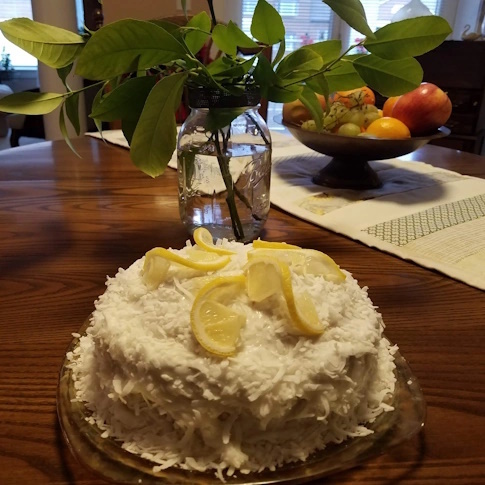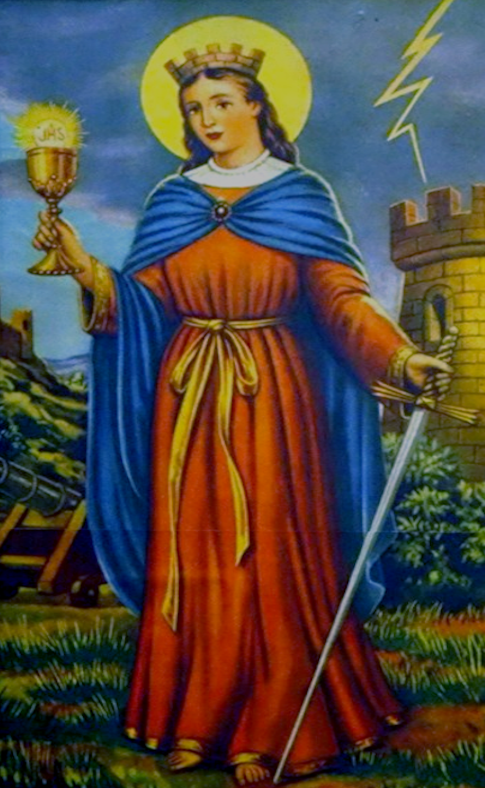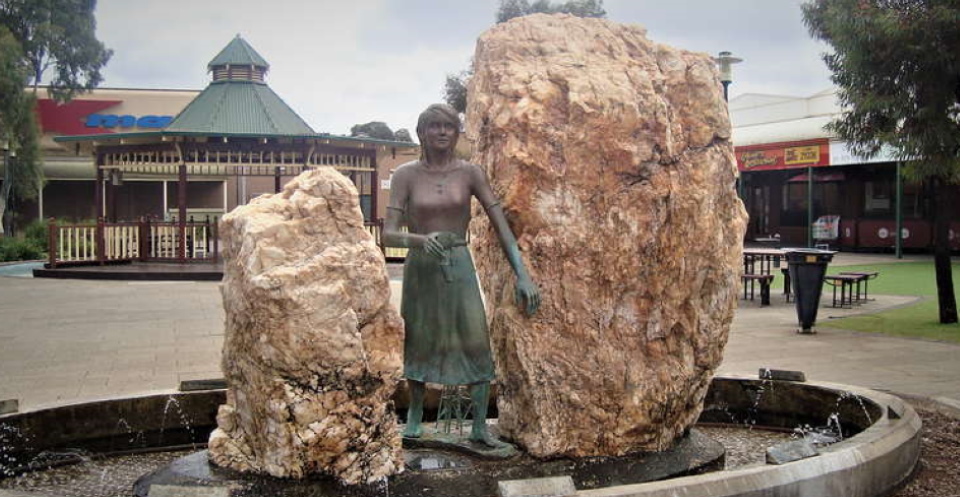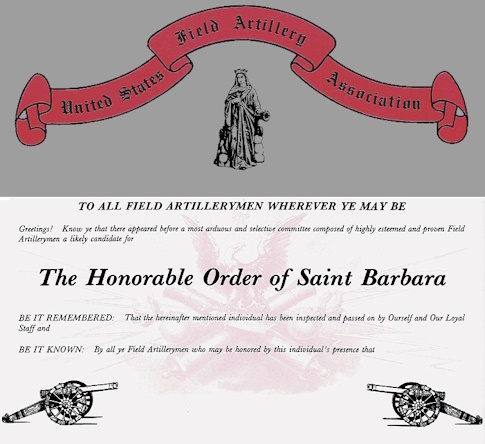4th December - St. Barbara
Written by Anne January & December 2020. Updated 2023.
A Lemon Christmas Cake
The traditional cake would be loaf shaped to represent the tower she was once imprisoned in.
Some believe St. Barbara has parallels with the Roman goddess Bona Dea whose feast was celebrated the night between the 3rd and 4th of December, the same day as St. Barbara. In some images, Bona Dea is seen wearing a tower crown. Bona Dea, literally “the good goddess” was the protector of fertility and prosperity. During her women-only feast, flowers, branches, and vines were offered and wine, a potion of milk and honey, and spelt cakes among the foods consumed.
St. Barbara was quite a lady,” Mom’s invitation had said. |  |

According to legend, which dates only to the 7th century, Barbara was the beautiful daughter of, Dioscorus a pagan ruler. He locked her in rooms in a tower to protect her from harmful influences. Here she had time to read and learn and she became familiar with the teachings of Christ, and was baptized. At that time, Christians were being persecuted everywhere, and were considered as enemies of the state.
Her father also had a private bath house built for her. The original plans were for two windows to be built, but, while her father was away, Barbara told the workers to make a third window, thus creating a Trinity of light. Barbara's bath house became a place full of healing power and many miracles occurred there.
Dioscuros planned to marry Barbara to a very prosperous man, with a view to increasing the family fortune. Barbara asked for time to think about this and then explained to her father that she was a Christian and did not wish to marry. She had already removed the different images of Pagan gods from her living quarters and had replaced them with crucifixes.
On hearing this, Dioscuros became enraged and took her to the provincial prefect Martianus. Martianus tried to persuade her to make her break with her faith, but when this failed, he had her thrashed and cast into jail. She prayed to God and her wounds healed.
On the following day, she was ordered by Martianus to pay sacrifice to the pagan gods. When she refused, she was sentenced to death by the sword. Dioscorus himself performed the execution. Immediately following Barbara's death, a terrible thunderstorm arose. As punishment for his monstrous crime, Dioscuros was killed by lightning and turned to ashes.
Later when Christianity
had become firmly established. Barbara's Day was used as a holiday in the very earliest festival calendar of the city of Cologne. The belief became widespread that Barbara could control lightning and other manifestations of flame and fire.

Barbarazweig -
It is said that on her way to prison, St. Barbara got her robe caught on a small cherry branch and it broke. The branch was put in water and then a new blossom opened on that branch on the day of her execution.
from Cherry Twigs in Germany - Traditionally people go outside and cut a small branch from a flowering tree - this is typically a cherry tree but can also be apple, birch, hazelnut, chestnut, plum, forsythia, lilac, or similar blossoms.
Known as the Barbara branch (Barbarazweig), this small spray is then placed in a vase of water and kept in a warm room for the next few weeks. If the fates align, then the branch should blossom in time for the Christmas holidays, as the warm temperature tricks the buds into thinking it’s already spring.
The belief is that the blossoming of the Barbara branch brings good luck for the coming year. If it blooms precisely on December 25, this is a particularly good omen. One tradition is also for young girls to assign the name of a boy they admire to each of several different branches; the one that blossoms first is the one they will go on to marry.

In St Barbara’s Square, Kalgoorlie, Australia Saint Barbara stands in a fountain accompanied by two huge rocks. This is a famous 'Gold Rush' town.
Barbara was adopted as the patron saint of miners most probably because the mining profession had to cope with many hazards to life. Miners later developed the use of gunpowder for disintegrating rock, sounds similar to thunder claps and lightning flashes. This led to their need for special protection against accidents from the use of explosives, thereby strengthening the reputation of Saint Barbara as their adopted patron saint. Miners would pray for plentiful blessings in their mining operations: both seeking a bountiful production and to be kept safe and health
Barbara Cathedral in Kuttenberg built between 1388 and 1518. The cathedral was built around an already existing Barbara altar in an area with many Barbara altars present. Kuttenberg has for centuries had on its coat of arms St. Barbara above the crossed hammer and gad.
Mine names frequently
indicated wishes and hopes, in both Freiberg and Marienberg there was
a mine named "St. Barbara Bonanza". There is also the "St.
Barbara Good Hope Vein" in the Harz Mountains on the
German-Austrian border
In the 6th century relics of St. Barbara were taken to Constantinople. Six hundred years later, they were taken to Kiev by the daughter of the Byzantine Emperor Alexius Comnenos. Today, they rest at the St. Vladimir cathedral in Kiev.
Doubt and questions surrounding the history of St. Barbara caused her to be removed from the General Roman Calendar, but not from the Catholic Church's list of saints in 1969.
Barbara is the feminine
form of the Greek word barbaros (Greek: βάρβαρος) meaning
"strange" or "foreign", from which the current
term Barbarian is also derived.
St. Barbara is one of the Fourteen Holy Helpers, venerated because their intercession is believed to be particularly effective against diseases.
She is the patron saint of armourers, artillerymen, architects, mathematicians and the Italian Navy and of the Gunnery Branch of the British Royal Navy.

The church at HMS Excellent, Whale Island, Portsmouth, Hampshire, England, the former Gunnery School of the Royal Navy, is called St. Barbara's.
The Irish Army venerates her as the patron saint of the Artillery Corps where she appears on the corps insignia, half dressed, holding a harp, sitting on a field cannon.
Saint Barbara's Day is celebrated by United States Army and Marine Corps Field and Air Defense Artillery, many Marine Corps Explosive Ordnance Disposal Technicians. The units and sub-units celebrate the day with church parades, sports days, guest nights, cocktail parties, dinners and other activities.
---oOo---
Anne is sharing a series of events throughout the year - you can find them listed by clicking to the link Feast Days & Festivals





